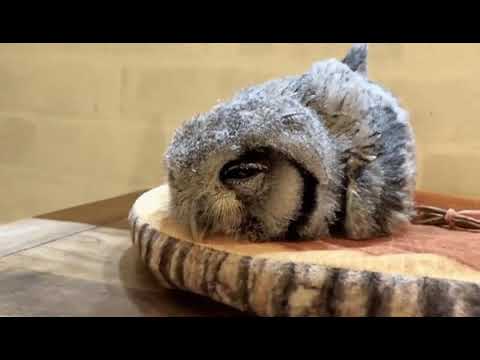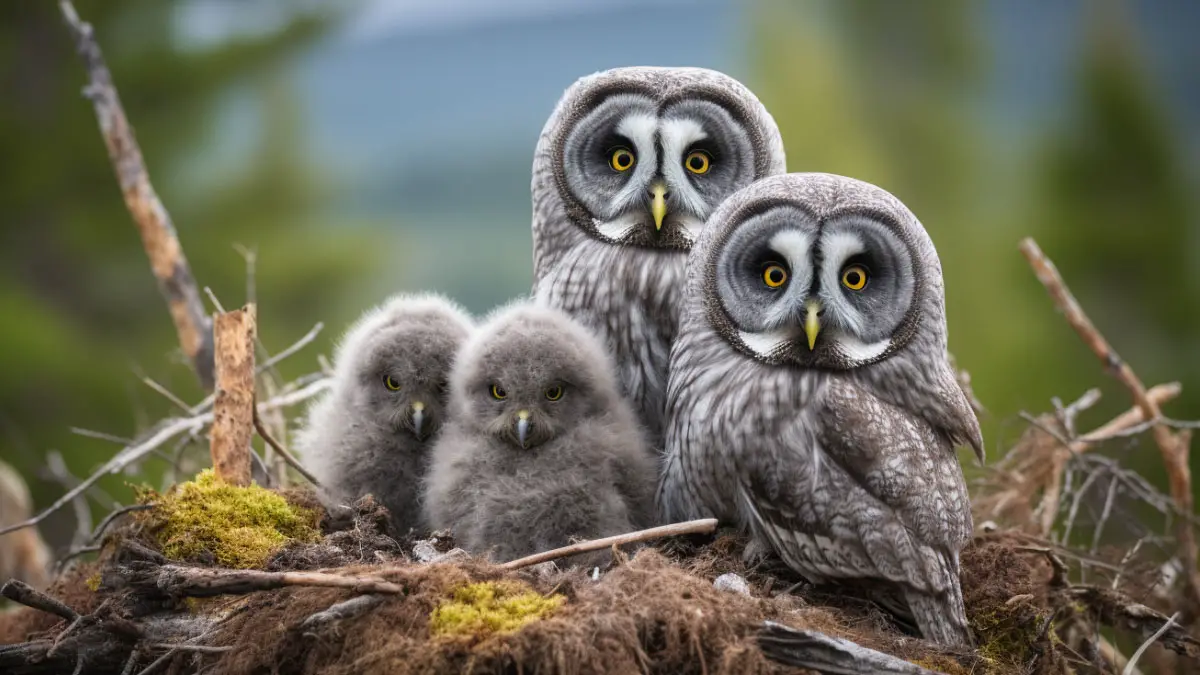Owl is known as a night knight in the world of birds. Most birds work all day and go to their nest to nap and get ready for the next day. But owls work just opposite from other birds; they stay awake at night and sleep in warm daylight.
So, how do owls sleep? An owl is in the order Strigiformes; they have quite a different pattern of sleep than other birds. Most of the owls sleep standing up, which, in human words, is known as the attention pose. They search hollow trees or crevice places to sleep.
Owls’ sleeping is an interesting thing, which can make you amazed and make you more curious to know more about these species. There are some interesting facts and rules you can find while you go deep on this topic.
Owl Resting Patterns: How Do Owls Sleep?

Owl is a prey bird who likes to hunt down and live their life. But they hunt at the time of night when everything is dark and quiet. Quietness is their power.
As their lifestyle is different from other animals, their sleep pattern also differs significantly from other birds.
In Owl’s history, there are two types of sleep patterns which have been found. One is applicable when an owl is a baby, and another type is suitable for adult owls.
Baby Owls’ Sleeping Pattern
Like human babies, infant owls sleep face down on their bellies, with their heads resting on the trees or other structures they are lying on. This is because owls still lack strong neck muscles, and their heads are relatively heavy, making it difficult for them to hold them up while they sleep.
See the following video on how baby owls sleep.
Adult Owls’ Sleeping Pattern
Mature owls can sleep with their heads up while standing on one or both legs once they’ve grown a little and developed additional muscle. They secure themselves to the branch they are resting on using their powerful claws.
Owls usually do not tuck their heads under their wings, in contrast to other birds. This is due to the Owl’s unique head shape, which sets it apart from many other bird species. Thus, when an adult owl is perched on a branch or other structure, they usually only close their eyes to sleep.

While they sleep, their heads will usually be turned forward, although occasionally, they may turn their heads back.
Places Where The Owls Sleep
Owls are solitude lovers of birds; they love to live alone and hunt around. For that, they do not make any nest or a home for two. They hunt and search quiet and close places to take a nap.
Cave-type trees, tree buckles, and ground are some common places where you will find them sleeping and waiting for the night. But there are some variations, which you can see during the change in monsoon.

In the Rainy season
Owls typically seek protected spots to roost in so they won’t get wet in the rain. In open grassland environments, certain species, such as short-eared owls, spend the night on the ground.
In wet weather, these birds either relocate to the canopy of adjacent trees or sit it out.
The Winter Season
Barred owls and other resident and territorial owl species can roost at the exact location year-round. There are also great horned owls, but they are unique in building their nests in the winter. Both parents can be seen roosting near the nest site during this period.

The Sunny Season
Owls are habituated to sleep in the sun, so they do not make a new home during the sunny days. But they always search for calm and places in the deep so they can sleep peacefully.
A List Of Owl Species And Their Unique Sleeping Positions and Common Locations

Here is a list of owl species’ sleeping patterns and locations.
| Species | Unique Sleeping Position | Location |
|---|---|---|
| Burrowing Owl | Sleeping face down | In a burrow dug into the ground |
| Northern Pygmy Owl | Sleeping eyes open | In trees with natural holes or woodpecker holes |
| Barn Owl | Sleeping upside down | In tree hollows, caves, or old buildings |
| Long-eared Owl | Sleeping in a hunched position | In dense foliage, like evergreen trees |
| Elf Owl | Sleeping in a vertical position | In tree cavities or saguaro cacti |
FAQ
Let’s see some frequently asked queries and their answers regarding owls’ sleep patterns.
They spend 10 to 12 hours a day sleeping on average. They try to choose a safe roosting spot, usually high up in tree branches, away from potential disturbances. Owls hunt and locate prey by using their exceptional hearing and night vision.
Owls and other nocturnal birds frequently sleep with their eyes open. They can remain alert about any environmental threats or dangers because of this habit.
A: New research reveals that, at least during adulthood, baby owls and mammals, including humans, sleep. Similarly, spending a comparable amount of time in an awake-like phase known as REM (rapid-eye movement), during which dreams are assumed to occur. Age-related reductions in REM sleep are observed in both humans and owls.
In The Sleepy End
The sleeping habits of owls are braided with their nocturnal lifestyle and survival strategies. Owls, being primarily nocturnal creatures, rest or sleep during the day in well-hidden, sheltered spots.
Their ability to sleep allows them to maintain attention while resting, ensuring they can quickly respond to potential threats or opportunities. Short, intermittent sleep periods enable them to save energy while remaining alert for hunting and avoiding predators.
These Owl Resting Patterns: How Do Owls Sleep? Reflect the remarkable adaptations of owls to their environment, aiding their survival in various habitats and contributing to their success as proficient nocturnal predators.








